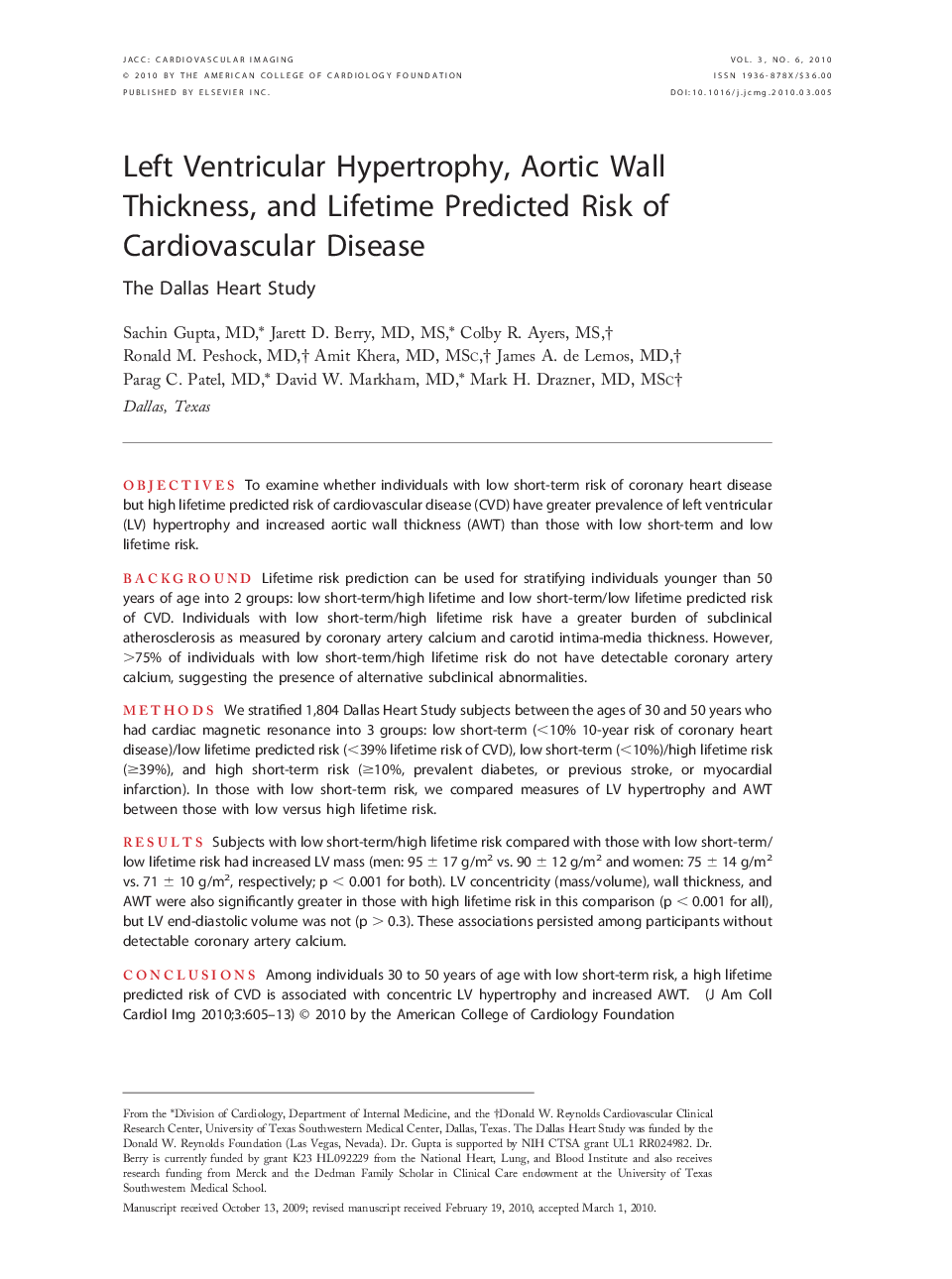| Article ID | Journal | Published Year | Pages | File Type |
|---|---|---|---|---|
| 2938923 | JACC: Cardiovascular Imaging | 2010 | 9 Pages |
ObjectivesTo examine whether individuals with low short-term risk of coronary heart disease but high lifetime predicted risk of cardiovascular disease (CVD) have greater prevalence of left ventricular (LV) hypertrophy and increased aortic wall thickness (AWT) than those with low short-term and low lifetime risk.BackgroundLifetime risk prediction can be used for stratifying individuals younger than 50 years of age into 2 groups: low short-term/high lifetime and low short-term/low lifetime predicted risk of CVD. Individuals with low short-term/high lifetime risk have a greater burden of subclinical atherosclerosis as measured by coronary artery calcium and carotid intima-media thickness. However, >75% of individuals with low short-term/high lifetime risk do not have detectable coronary artery calcium, suggesting the presence of alternative subclinical abnormalities.MethodsWe stratified 1,804 Dallas Heart Study subjects between the ages of 30 and 50 years who had cardiac magnetic resonance into 3 groups: low short-term (<10% 10-year risk of coronary heart disease)/low lifetime predicted risk (<39% lifetime risk of CVD), low short-term (<10%)/high lifetime risk (≥39%), and high short-term risk (≥10%, prevalent diabetes, or previous stroke, or myocardial infarction). In those with low short-term risk, we compared measures of LV hypertrophy and AWT between those with low versus high lifetime risk.ResultsSubjects with low short-term/high lifetime risk compared with those with low short-term/low lifetime risk had increased LV mass (men: 95 ± 17 g/m2 vs. 90 ± 12 g/m2 and women: 75 ± 14 g/m2 vs. 71 ± 10 g/m2, respectively; p < 0.001 for both). LV concentricity (mass/volume), wall thickness, and AWT were also significantly greater in those with high lifetime risk in this comparison (p < 0.001 for all), but LV end-diastolic volume was not (p > 0.3). These associations persisted among participants without detectable coronary artery calcium.ConclusionsAmong individuals 30 to 50 years of age with low short-term risk, a high lifetime predicted risk of CVD is associated with concentric LV hypertrophy and increased AWT.
